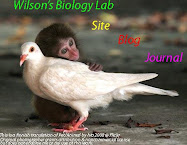Monday, May 3, 2010
The Long Arm of the Immune System
Some scientists are attempting to use this phenomenon to inoculate our bodies against cancer. With some cancer patients, scientists are taking monocytes, cells that become either macrophages or dendritic cells, and culturing them along with antigens of the specific cancer the patient has. Once the dendritic cells mature and are ready to present the antigen to B and T-cells, the scientists inject them back into the patient. Although this does not cure cancer, or allow the body to completely fight it off, it has been show to make patients immune responses stronger than they would have been. However, there are some problems with this technique. Because cancers are mutating by definition, it is possible that the cancer could stop presenting the antigen that the body was targeting, rendering the vaccine useless. Also, if the antigen the scientists have isolated is present elsewhere in the body, it could lead to the body destroying other things than the cancer.
Another thing scientists are attempting to learn about dendritic cells is how to shut them down. In autoimmune diseases, dendritic cells appear to be hyperactive. For example, when a patient has lupus, it appears that their dendritic cells mature in their blood stream, due to a protein that their cells release, and then ingest the patient’s DNA, which they then present to a B and T-cell, creating an immunity to the bodies own DNA. By learning more about the mechanisms that control dendritic cells, scientists hope to eventually be able to control our immune system responses.
-Dylan Karle
Source: Scientific American, November 2002 issue
Sunday, May 2, 2010
New HIV model may help in finding T cells that can fight against the virus
(The structure of HIV)
In the past, clinical trials have shown that in the acute first phase of human infection (about 2-6 after the virus enters the host body), HIV behaves normally. Our body sends T Cells to fight the virus, which is growing stronger. T cells work when they are activated by the presence of their specific pathogen in the body. They have markers on the outside of their cells that bind to an antigen that is only on the HIV virus. They then begin to reproduce and go to the part of the body that is infected, where they begin to attack the virus. This is different from how the innate immune system works in that T cells are not only limited to attacking the virus when it is in the blood stream, since they can also kill infected cells, killing the virus before it can produce more viruses in that infected cell.
(A T cell attacking a virus)
In most viruses, T cells are able to completely fight off the virus and use their memory to patrol the bloodstream in case the virus ever comes back, in which case they would be able to recognize the virus immediately and fight it off again. However, in HIV, the T Cells are not able to completely kill the virus, which stores itself away and spends years recuperating its strength. HIV has the ability to target CD4+ T cells, which are the master regulators of our immune system. They also have many mutating properties. Researchers believe that these two factors are what allow HIV to escape total annihilation. During the time HIV hides and regains strength, it is also slowly attacking our immune system.
-Emma G.
Sources:
http://www.medicalnewstoday.com/articles/187222.php
http://www.sciencemuseum.org.uk/on-line/lifecycle/images/1-2-5-3-5-2-2-0-0-0-0.jpg
http://biology.kenyon.edu/slonc/gene-web/Lentiviral/hiv_image.jpg






